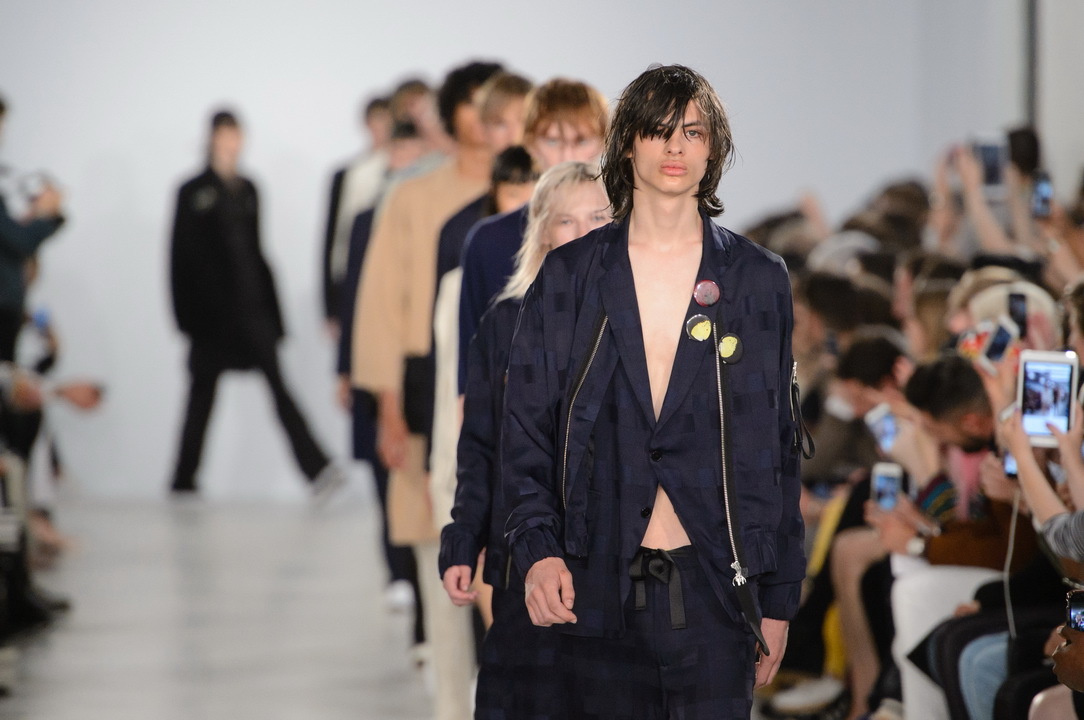The spring/summer 17 men’s shows have only just begun, but this season’s hot topic is already clear: what is the future of these fashion weeks and how long will they last? Come February, Gucci is merging its women’s and men’s show into one show to be presented on the women’s schedule. Prada has been using its men’s show as a platform for its women’s pre-collections for years. And all around the London shows this weekend, menswear designers are doing womenswear trying to keep up with demand — or at least some elusive expectation of what they should all be doing. It’s about business, about creating bona fide brands, and perhaps before it’s too late and there’s only room for co-ed shows on one co-ed schedule to rule them all. But it makes you wonder why we even need men’s and womenswear at all. Isn’t a sweater simply a sweater, no matter who’s wearing it? As long as it fits, surely it’s not gender-specific?
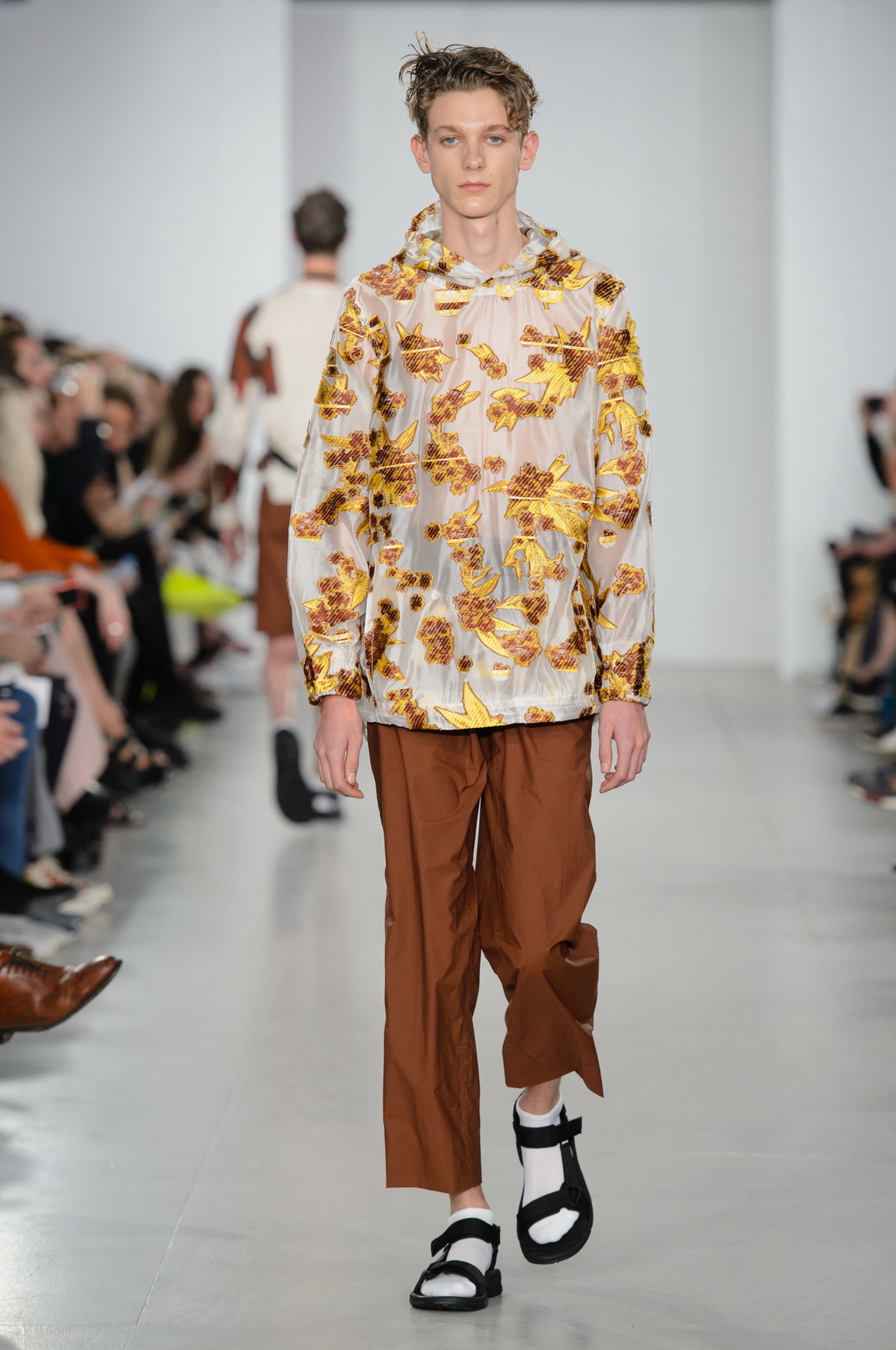
On Saturday in London, Lou Dalton was one of the only designers who stuck to an all-male cast, which was interesting considering the fact she was the only female designer. “It was basically about walking,” she said, noting how recent time spent in Yorkshire had got her in the mood for hiking. “I just wanted to do something that felt personal and had a sense of freedom.” In Dalton’s case, personal doesn’t mean female. She expresses herself through the male form — something that, unlike a sweater, actually is gender-specific — and it feels entirely honest for it. Could women wear her textured jacquard inspired by the bracken she’d seen on those Yorkshire moors? Absolutely, but they’d want to wear it because it has a male character that no gender-fluid movement or co-ed fashion week could ever erase. Men and women are not the same creatures, but in Dalton’s beautiful, poetic, nature-centric menswear you always feel a female presence, which wouldn’t necessarily have the same effect in a womenswear version.
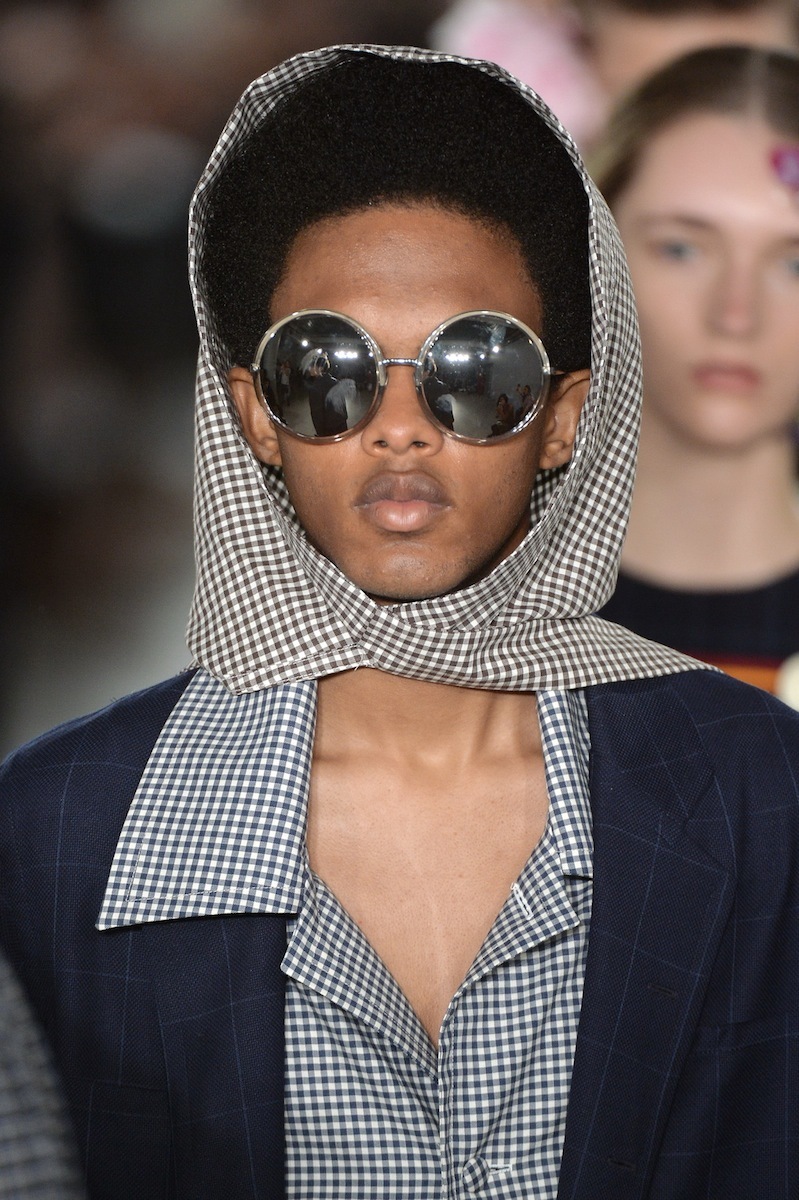
It wasn’t Agi & Sam’s first season at the womenswear rodeo, and this time the co-ed nature of their shows was the main influence. “It started off from looking at my dad,” Sam Cotton said backstage. “He was a farmer and he got bitten by a cow and got tetanus and nearly died. My mom went to work and he started being a househusband. So we started looking at how roles are defined in the home, and why men have to be the breadwinners. We started playing with this juxtaposition,” he explained, referring to the bouquets of flowers carried by some of the male models, the classic 50s housewife vibe of a gingham check, and a Del Boy fan t-shirt. Ironically, the statement that resonated the most was his take on tailoring. “We struggle to wear suits because we feel like children, so we try to make jackets we can wear.” For most young people dressing for today, gender-specific clothes are the least of our concerns—dress codes, on the other hand, are the real challenge. And confronting and evolving that traditional men’s uniform is just one of the reasons we still need a men’s fashion week.
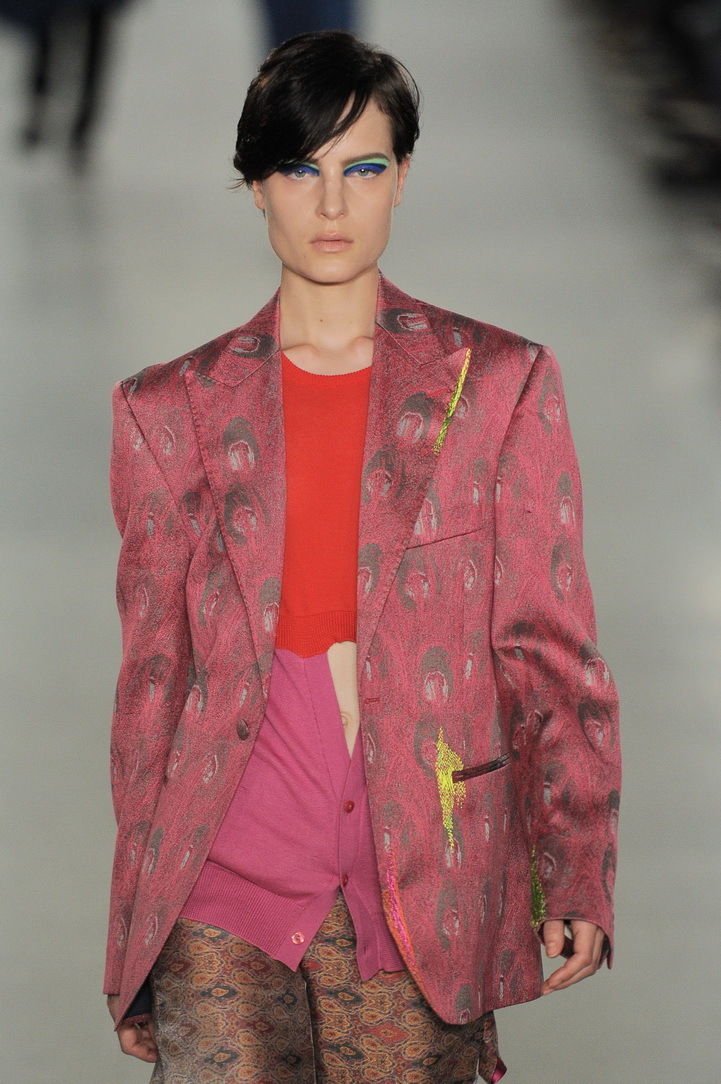
One of the tailoring brands that does that is Casely-Hayford, which had its womenswear debut on Saturday. “We’ve been getting personal orders on the women’s side for our menswear for years, and because my dad used to do it back in the day we just wanted to wait until the right time to do it, and it felt right now,” Charlie Casely-Hayford said after the show. “We wanted to create a woman, who’s maybe a partner to the Casely-Hayford man rather than them being brother and sister. They are different and that was important to us.” Rooted in the contrast between the pre-internet youth of Joe Casely-Hayford and the post-internet youth of Charlie, the collection played with rock and grime influences and menswear proportions, which had been warped into female forms. “Our business is founded on tailoring and we look for different ways of moving that into different areas,” Charlie said. Their take on women’s tailoring was distinctly handsome: broad-shouldered and roomy, it consistently felt like women in menswear, which is never a bad thing.
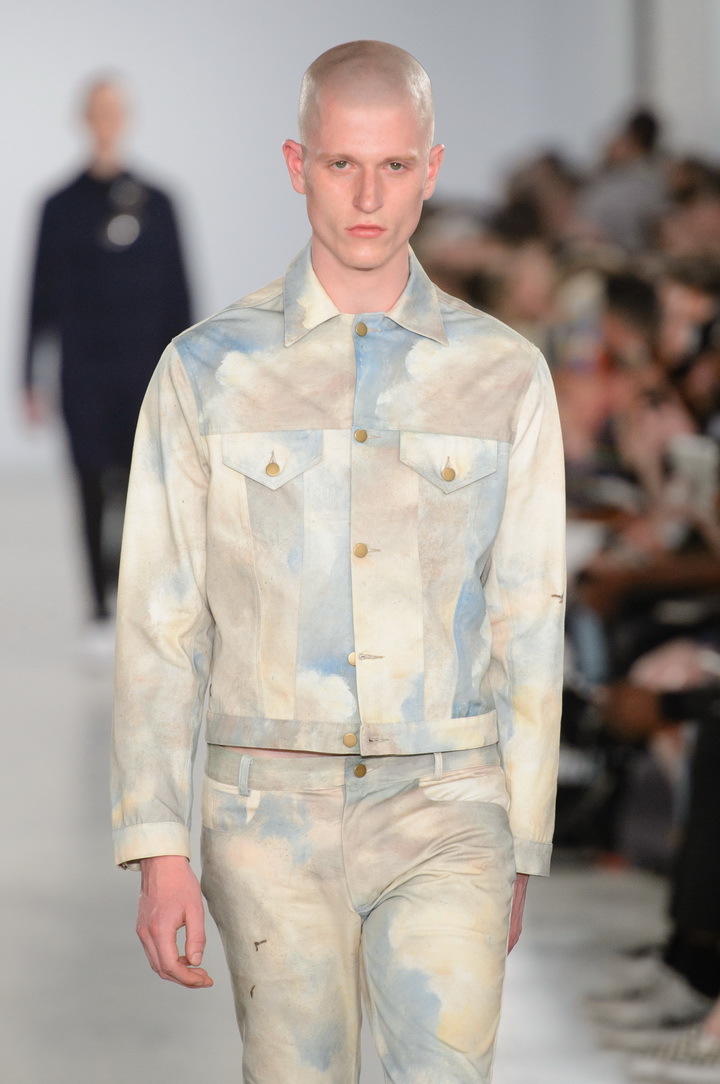
Another member of London menswear’s co-ed club is Matthew Miller, who was sporting long locks and short-shorts backstage at his show. Alongside his Nirvana seating soundtrack, it was a well-timed reminder that the grunge movement already wiped out gender-specific dressing over two decades ago. Oh well, whatever, nevermind. Miller didn’t talk about the women’s looks that featured in his collection, but about skinhead culture and clouds. “Skinheads started off as a beautiful idea and was very innocent, and it ended up being very black and chaotic — the same as a cloud. It’s pure, it’s white, and it ends up black.” It translated into a moody collection where cloud motifs as skinhead-y bleached denim provided a hint of optimism, all of which the often-political Miller said wasn’t a parallel to anything going on in the world right now. “Since I started doing it everyone else has got political so now I let them do it instead.” As we know, sometimes silence speaks louder than words.
Credits
Text Anders Christian Madsen
Photography Mitchell Sams
